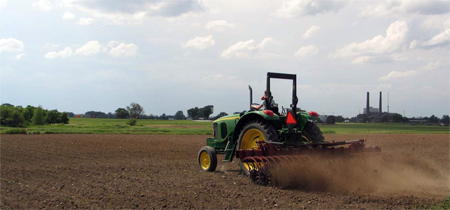Soil crusting from rapid drying may cause emergence issues
Wet planting conditions, heavy post-planting rainfall and rapid soil drying may create the potential for soil crusting emergence issues.
After all the rain and cold weather during the end of May, the forecast calls for us to turn a corner and finally get some warm temperatures moving into June. The increase in temperature will certainly be welcomed to help dry soils out and get planters back in the field, but this rapid warm-up may cause some issues for crops already in the ground.
When planting into wet soil conditions, a big concern is the effect secondary tillage operations, double disk openers and packing wheels have on soil structure. It’s understandable that with such a wet and delayed planting season, there are going to be some field operations performed under less than ideal conditions. When soils are worked or manipulated wet, water within pore spaces lubricates soil particles and makes it easier for them to pack together. When these soils rapidly dry, such as in the full sun, high 80 degree conditions forecasted for the week of May 30, water is removed from the soil and particles are left compacted against one another. When this occurs on the soil surface, we call the phenomenon soil crusting. Soil crusting can also result from heavy rainfall events when the raindrops cause soil arrogates to break apart and splash, realigning in a denser configuration. Sounds a lot like the conditions we’ve seen over the last days of May, huh?
The extent to which soil crusting may occur depends on how easily soil particles can become compacted. Low levels of organic matter, high silt content, low surface residue and small soil aggregate size can all lead to soil particles packing together. Some of these factors can’t be influenced much by management, but maintaining surface residue and minimizing tillage can help reduce the chances of soil crusts forming.
The most apparent effect of soil crusting is difficulty in crop emergence. Soybeans tend to struggle with emergence issues to a greater extent than corn. As the soybean hypocotyl swells to increase pressure on crusted soils, the hypocotyl can snap off. Cotyledons can also be torn off as the plant pushes through crusted soils. Shawn Conley and John Gaska of Wisconsin illustrate these effects in a newsletter article, Delayed Soybean Emergence and Cotyledon Loss, discussing these challenges in their state last year. Read the article online at http://goo.gl/d40Mh.
Rotary hoes are the most effective tools for eliminating soil crusts that are hindering crop emergence. When operating these tools, it’s important to periodically stop and access crop damage. Soybeans are especially sensitive to damage as the crook emerges. Rotary hoes can also snap off the hypocotyl or rip off cotyledons, similar to the damage that can be incurred by the crop struggling to get through a soil crust in the first place. Operating speed may be slightly adjusted to reduce this damage, which will be a process of trial and error. Damage can also be minimized by operating rotary hoes later in the day when plants are more pliable rather than early in the morning in cool conditions when plants can be brittle. Crop damage incurred from operating a rotary hoe often appears worse than it really is, but severe damage can occur at some growth stages. If the rotary hoe is resulting in damage, you’ll likely have to make a determination if more damage is occurring from the rotary hoe or the soil crust and act accordingly. Some damage from the rotary hoe is expected and acceptable, but specific site conditions will have to dictate where the line crosses into unacceptable.
As soils dry this week and we rush to finish planting, it’s important to remember to monitor the crop already in the ground. Conditions may be right to lead to soil crusting issues, so be ready to pull out the rotary hoe and give struggling seedlings a little help emerging.

Photo credit: Erin Taylor



 Print
Print Email
Email

